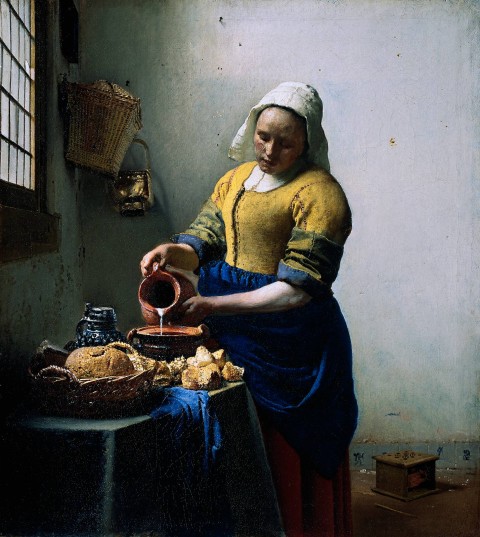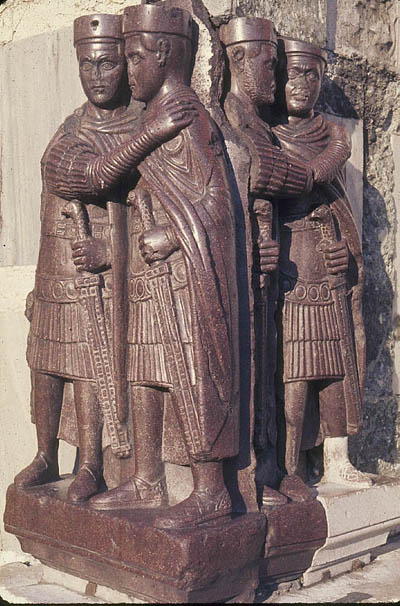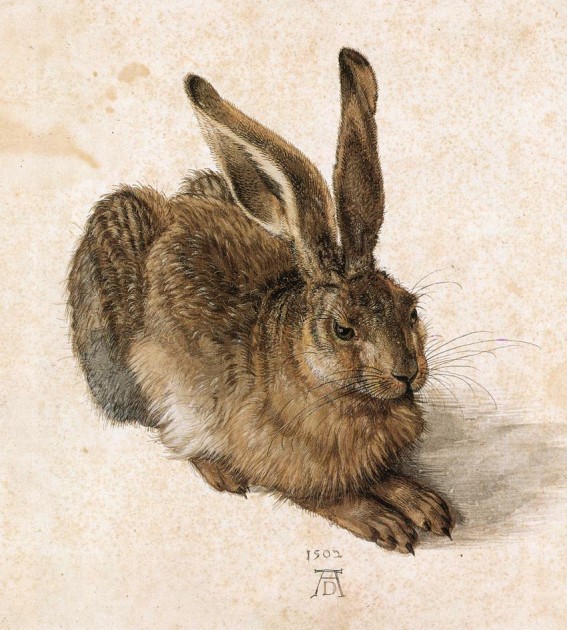Thursday, January 3rd, 2013
Expensive Pigments, Dyes and Artistic Mediums
Lately I’ve been thinking about some of the artistic mediums and/or colors which were expensive or highly prized at different points in history. Obviously, there are some artistic mediums which were valued in the past that still have value today, like gold or silver. There are a few other mediums have stuck out to me beyond these common examples, and I thought I would jot down a few things about these mediums and colors.

Cult Image of the God Ptah, lapis lazuli, ca. 945-600 BC (Dynasty 22 – early Dynasty 26). Height 2.25″ (5.6 cm), Metropolitan Museum of Art
LAPIS LAZULI: Lapis lazuli is a hard stone which contains the mineral lazurite. This rare blue stone which originally came from Afghanistan and was highly prized in the ancient period. In fact, in early cultures lapis lazuli was considered more expensive than gold. Due to its expensive nature, lapis lazuli was usually used in royal sculptural workshops, either for depictions of royalty or depictions of the gods.1 Such is the case with the cult image of the God Ptah, the Lord of the Sky. The lapis lazuli is creatively used in this instance to underscore Ptah’s role, since the medium suggests a deep blue cosmos studded with stars.
PORPHYRY (AND THE COLOR PURPLE): The color purple was highly prized in ancient cultures, particularly Roman, Byzantine, and medieval cultures. This color was largely prized because of the dye Tyrian purple, which is also known as “royal purple” or “imperial purple.” Tyrian purple dye was rare and valued, since it was made from the secretion of mollusks.2 During ancient times only the elite could afford to be clothed in purple. As a result, the color purple is associated with the iconography for royalty and deities.3 Such imagery can be found in representations of Christ (like mosaics found at Sant’Apollinare Nuovo) and emperors (like the Justinian mosaic in San Vitale). Even the Virgin Mary is sometimes associated with purple.
As a result of this expensive dye and its associations with the elite, other purple-colored substances, like the hard stone porphyry (see image above), were also valued. The red-purple variant of porphyry which was valued among royals came from a specific remote site in Egypt: Gebel Dokhan. Even today, this is the only location in the world in which imperial porphyry is found.

Vermeer. “Woman Pouring Milk” (The Kitchen Maid), c. 1660. Oil on canvas, which includes ultramarine blue pigment
ULTRAMARINE BLUE: Ultramarine blue is a pigment which existed in ancient times, but was also used in the Early Modern period. This pigment was highly valued, largely because true ultramarine blue is created with ground lapis lazuli stone. The ground stone is purified with multiple washings and then bonded with oil using a hand mulling process. Since the early nineteenth century, however, ultramarine blue is only created through a synthetic process.
Renaissance and Baroque artists, including Vermeer (see image above) used true ultramarine blue. The vibrant blue of the kitchen maid’s wrap is a great example of the brilliant color found in this type of pigment. True ultramarine was expensive, and sometimes Renaissance artists would resort to using azurite blue instead.
Okay, now it’s your turn. What are some other artistic mediums or pigments which which were valued in history? (Off the top of my head, I can think of other fabrics which have been valued, like silk and velvet.) If you know of specific works of art which are created with certain valued mediums or pigments, please share!
*Several of my thoughts for this post were sparked by the website, “Pigments through the Ages.” This website has a lot of information about the history of different pigments, how to make these pigments, and the technical details for these pigments.
1 Blue was a very important color in Ancient Egypt. In addition to the lapis lazuli stone, the Egyptian blue pigment was also used for painting depictions of royalty and gods.
2 Victoria Finlay explains that 250,000 “murex branders” and “murex trunculus” shellfish were needed to extract the dye needed for one garment (which would be about half an ounce. Additionally, Finlay explains that the clothes dyed in purple had a distinctive odor of fish and the sea, which Pliny disliked and called “offensive.” See Victoria Finlay, The Brilliant History of Color in Art (Los Angeles, The J. Paul Getty Museum, 2014), p. 28.
3 A mythology surrounding the discovery of purple dye developed in ancient cultures. The Roman writer Cassidorus explained that Tyrian Hercules discovered the purple color when his dog devoured a murex snail while they were at a beach. Later artists were also interested in this mythology; the Baroque artist Rubens painted “Hercules and the Discovery of the Secret of Purple” (La découverte de la pourpre”) around 1636.


